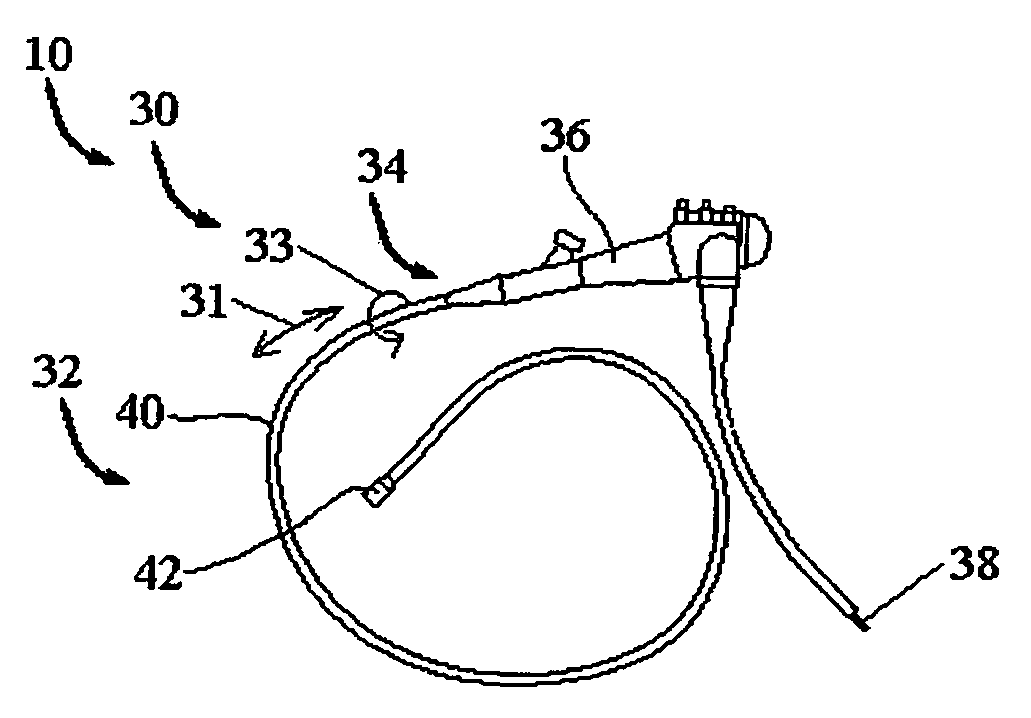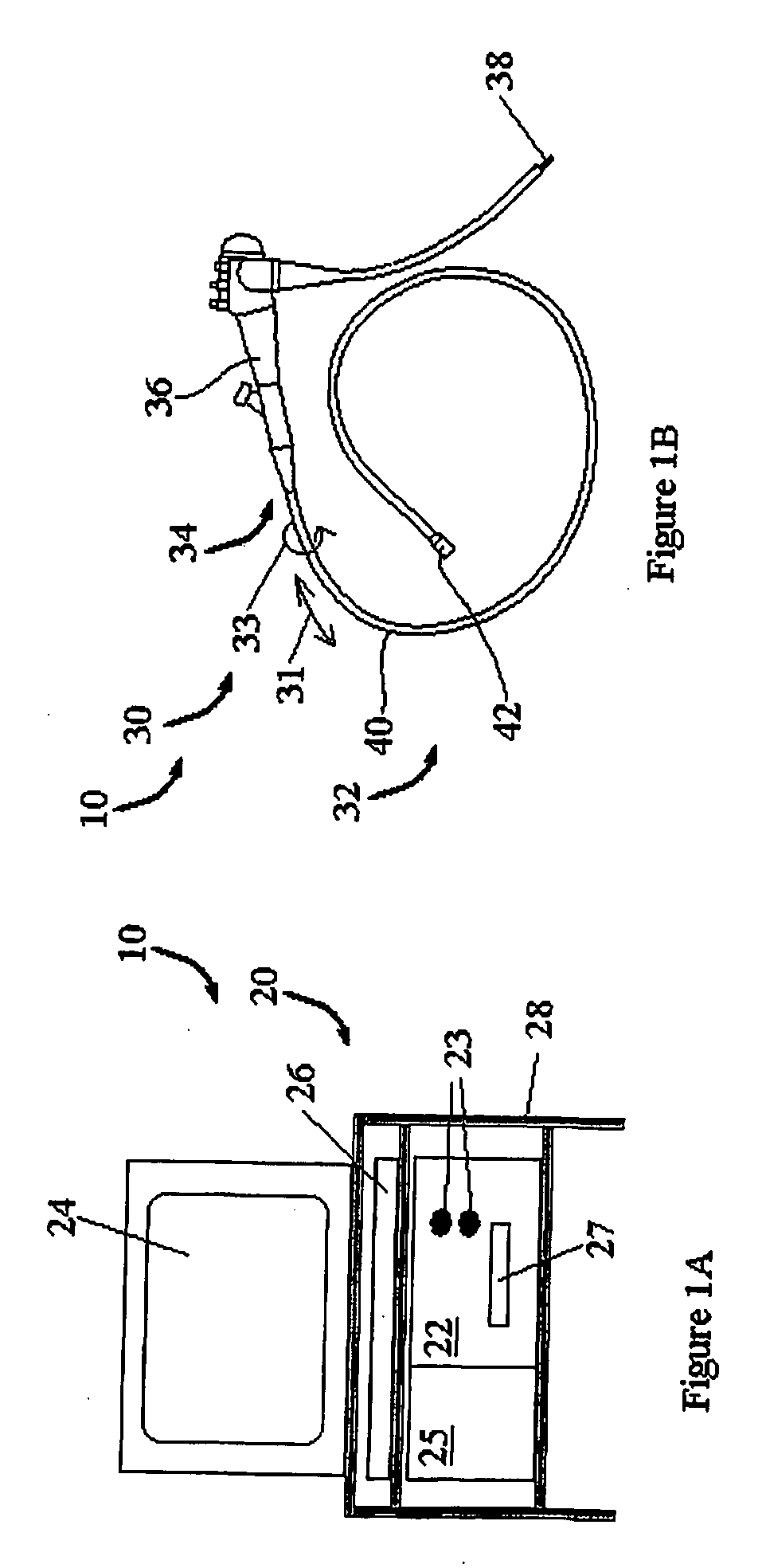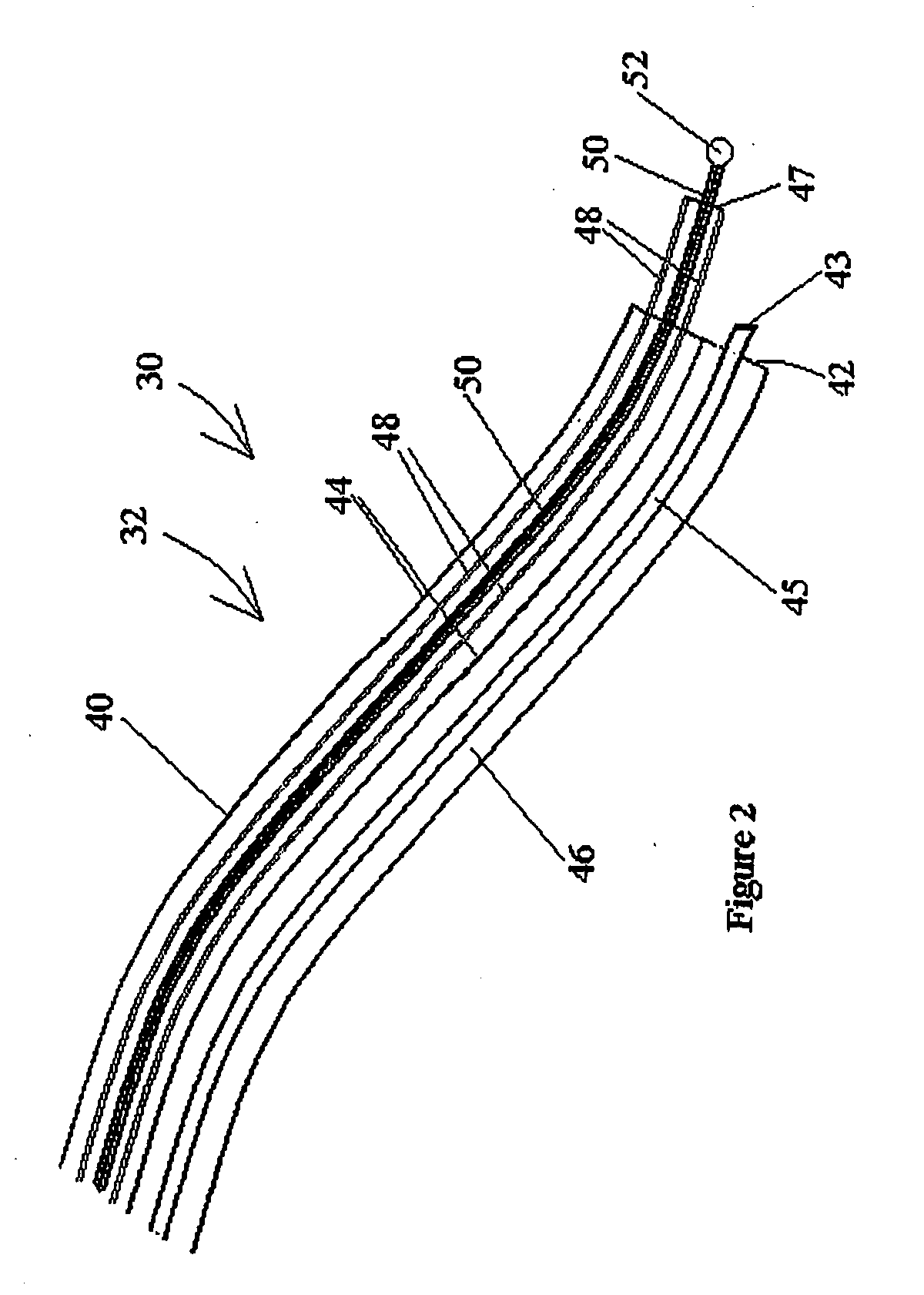Endoscopic System for In-Vivo Procedures
a tissue characterization and endoscope technology, applied in the field of in-vivo tissue characterization endoscope, can solve the problems of unfulfilled medical goals, untreated, undetected and untreated, and single colonoscopy is often not enough to identify the source of colorectal cancer
- Summary
- Abstract
- Description
- Claims
- Application Information
AI Technical Summary
Benefits of technology
Problems solved by technology
Method used
Image
Examples
Embodiment Construction
[0083]The present invention relates to an endoscopic system for in-vivo tissue characterization, using a nonirradiative electromagnetic sensor. The endoscopic system is further configured to employ several follow-up procedures, for example, biopsy sampling, localized surgery, dispensing a medicament, and the like, so that on the whole, the endoscopic system provides for the early detection of cancerous and pre-cancerous tissue, in vivo, and for the application of immediate follow-up procedures to any such tissue.
[0084]The principles and operation of the device and method according to embodiments of the present invention may be better understood with reference to the drawings and accompanying descriptions.
[0085]Before explaining at least one embodiment of the invention in detail, it is to be understood that the invention is not limited in its application to the details of construction and the arrangement of the components set forth in the following description or illustrated in the d...
PUM
 Login to View More
Login to View More Abstract
Description
Claims
Application Information
 Login to View More
Login to View More - R&D
- Intellectual Property
- Life Sciences
- Materials
- Tech Scout
- Unparalleled Data Quality
- Higher Quality Content
- 60% Fewer Hallucinations
Browse by: Latest US Patents, China's latest patents, Technical Efficacy Thesaurus, Application Domain, Technology Topic, Popular Technical Reports.
© 2025 PatSnap. All rights reserved.Legal|Privacy policy|Modern Slavery Act Transparency Statement|Sitemap|About US| Contact US: help@patsnap.com



